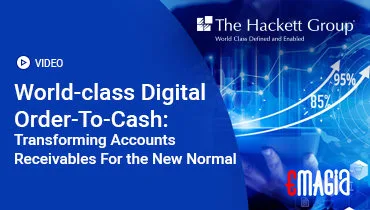Credit management collections is the cornerstone of strong financial health for any business. Organizations today face mounting challenges in handling overdue receivables, managing customer payment behavior, ensuring compliance with regulatory standards, and resolving disputes effectively. With AI-powered credit management, machine learning-driven debt collections, predictive payment scoring, and ERP credit management integration, businesses now have the tools to build advanced strategies that combine efficiency, compliance, and customer satisfaction. This complete guide explores every dimension of modern collections – from the credit control process and digital collection agencies to collections dashboard analytics and ROI optimization.
What is Credit Management Collections?
Credit management collections refers to the structured process of granting credit, assessing risk, managing credit limits, monitoring customer behavior, and recovering overdue receivables. It bridges the gap between credit approval and debt recovery. A successful strategy balances flexibility with enforcement, ensuring that companies remain competitive while maintaining strong cash flow. Today, enterprises are increasingly using AI credit management systems, predictive analytics for collections, and automated follow-up sequences to streamline recovery and reduce manual work.
Why Credit Management Collections Matters
Collections is not just a finance function; it directly influences sales growth, cash flow stability, operational efficiency, and customer retention. Poor collections management results in overdue receivables, cash flow strain, and reputational risks. Businesses that adopt credit application automation, intelligent risk assessment, and collections management software benefit from reduced bad debts, better compliance, and improved operational resilience. Instead of chasing overdue balances reactively, modern companies predict payment risks and act ahead of time to secure outcomes.
Core Principles of Credit Risk and Control
- Efficient credit approval and automated onboarding of new customers
- Use of data-driven credit scoring models to evaluate customers
- Strict credit limit enforcement coupled with flexibility in negotiations
- Scheduling and tracking of credit review dates for ongoing assessment
- Integration of compliance requirements into every stage of the process
The Credit Control Process Lifecycle
The lifecycle of credit control covers everything from onboarding customers to recovering balances:
- Credit Application Automation: Streamlining the onboarding process with digital forms and rule-based workflows.
- Scoring and Decisioning: Using predictive models and customer history to evaluate risk quickly.
- Enforcing Credit Limits: Ensuring transactions stay within approved thresholds.
- Monitoring Payment Behavior: Regular analysis of customer activity with predictive analytics.
- Collections and Disputes: Automated follow-up sequences, resolution workflows, and escalation as needed.
Collections Management
Shifting from Reactive to Predictive Collections
Traditional collections methods were reactive, starting only after defaults occurred. Today, predictive modeling and AI tools allow businesses to anticipate overdue receivables through predictive payment risk scoring. This makes it possible to take preventive measures, such as flexible payment plans or early reminders, before issues escalate.
Introduction of Agentless Collections
Agentless collections automate repetitive tasks like reminders and follow-ups, allowing collection managers to focus on high-value disputes. Customers have access to digital portals that let them resolve overdue balances, set repayment schedules, or raise disputes without waiting for direct intervention.
Digital Collection Agencies
Unlike traditional agencies, digital collection agencies integrate with corporate systems and emphasize compliance, transparency, and secure digital payments. This model aligns with modern expectations for data protection and customer experience, reducing friction and improving recovery rates.
AI-Powered Credit Management
- Predictive analytics: Identifying at-risk customers before defaults happen.
- AI debt collection software: Automating account recovery more efficiently.
- Machine learning debt collections: Continuously improving collection strategies through data feedback.
- Smart payment reminders: Personalized notifications based on customer history.
- Dispute management automation: Reducing delays and increasing customer satisfaction.
ERP Integration for Collections
ERP-driven credit management creates a centralized environment for monitoring credit activity. SAP collections management and NetSuite collections automation integrate credit limits, overdue receivables, dispute tracking, and payment reminders under one system. ERP dashboards with analytics give CFOs the ability to act strategically with up-to-date visibility on risk and cash flow trends.
Compliance and Security in Collections
- Maintaining compliance in collections across jurisdictions
- Meeting regulatory standards for credit and debt management practices
- Protecting financial data through encryption and access controls
- Strengthening digital payment security for safe transactions
- Adhering to fair practices that build long-term customer trust
Analytics and Dashboards for Collections
Modern finance teams use collections dashboard analytics to gain real-time visibility. These dashboards display overdue receivables, disputed invoices, customer segments driving DSO increases, and debt recovery trends. Over time, predictive dashboards powered by machine learning improve accuracy in forecasting payment risks.
Emerging Collections Trends
- Growing adoption of digital transformation in finance
- Cost reduction initiatives in AR collections
- Operating efficiencies through automated follow-up sequences
- Stronger emphasis on customer satisfaction during collections
- Wider use of AI collections solution providers across industries
Measuring ROI from Collections Automation
Collections software creates ROI by reducing Days Sales Outstanding (DSO), improving liquidity, reducing manual staffing costs, and preventing revenue leakage from defaults. Case studies show that businesses adopting automated collections reduce overdue accounts significantly while freeing resources for higher-value finance activities.
How Emagia Helps Organizations
Emagia delivers an integrated platform combining AI-powered credit management, digital collections workflows, predictive payment risk scoring, and intelligent dispute management capabilities. With ERP integration available for SAP, NetSuite, JD Edwards and etc, Emagia empowers organizations to automate agentless collections, ensure secure digital payments, and maintain compliance. Its role is to help finance teams transition from reactive debt collection to strategic, cash-flow-driven operations, ensuring stronger customer relationships and operational efficiencies.
Conclusion
Credit management collections today is multi-dimensional, covering customer onboarding, risk evaluation, proactive follow-ups, dispute resolution, compliance, and automation. By leveraging AI, ERP integration, and analytics, companies can eliminate inefficiencies, strengthen compliance, and drive sustainable financial stability. The future lies in predictive, digital-first, customer-centric credit management strategies supported by secure data handling and intelligent automation.
FAQs on Credit Management Collections
What is the difference between credit management and collections?
Credit management includes assessing and approving credit, monitoring limits, and controlling risk, while collections focuses on recovering overdue balances. Both processes are interconnected to ensure strong liquidity and avoid bad debt.
How do AI-powered tools improve collections?
AI improves collections through automated reminders, predictive risk modeling, personalized repayment structures, and faster dispute resolution. These tools reduce manual workloads and improve recovery rates.
What compliance standards affect collections?
Compliance standards include GDPR, PCI DSS, and FCRA, each of which dictates how customer financial data is stored, used, and protected. Businesses must align collection practices with these standards to avoid penalties and protect trust.
How does predictive payment risk scoring benefit businesses?
Predictive scoring helps businesses anticipate defaults and payment delays. By identifying high-risk customers, companies can take preventive action, such as adjusting credit limits or offering alternate payment arrangements.
What is dispute management automation?
Dispute management automation refers to using software to manage invoice disputes efficiently. It enables validations, automated workflows, and faster resolutions to minimize collection delays.
What role does ERP integration play in collections?
ERP integration streamlines workflows by connecting credit limits, overdue monitoring, disputes, and payment reminders in one central platform. This improves visibility, accuracy, and decision-making for finance leaders.
Which industries benefit the most from AI collections?
Industries such as retail, utilities, telecom, and manufacturing benefit most because they handle large volumes of customer transactions where automation reduces risk and manual effort.
What ROI can businesses expect from collections software?
Most businesses see ROI from reduced overdue accounts, better liquidity management, lower operational costs, and faster dispute resolutions. The exact ROI depends on company size and transaction volumes.
What trends are shaping collections?
Key trends include agentless collections, predictive scoring models, AI-driven recovery tools, compliance-focused practices, and ERP dashboard adoption for real-time collection monitoring.
How can SMBs benefit from digital collection agencies?
SMBs gain efficiency by outsourcing collections to digital agencies that offer compliance adherence, digital payments, and dispute resolution workflows with lower costs compared to traditional agencies.



